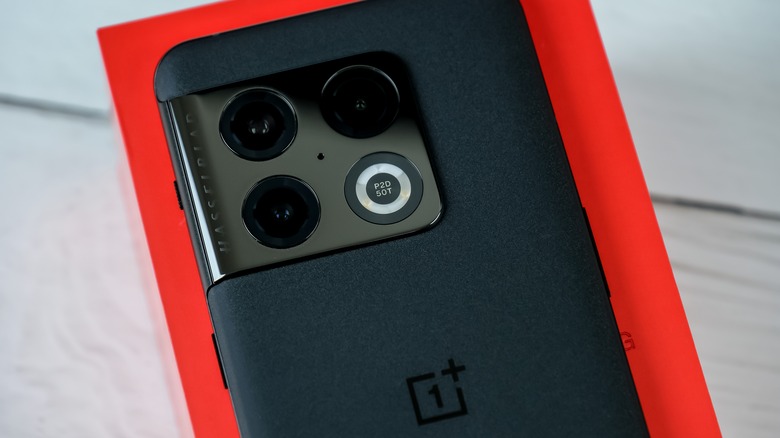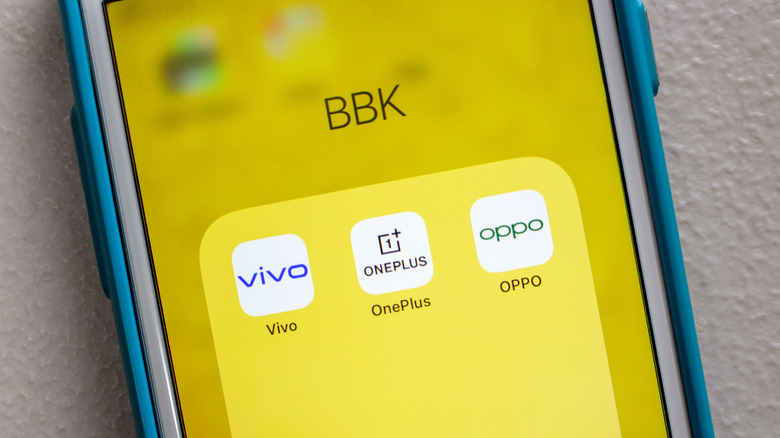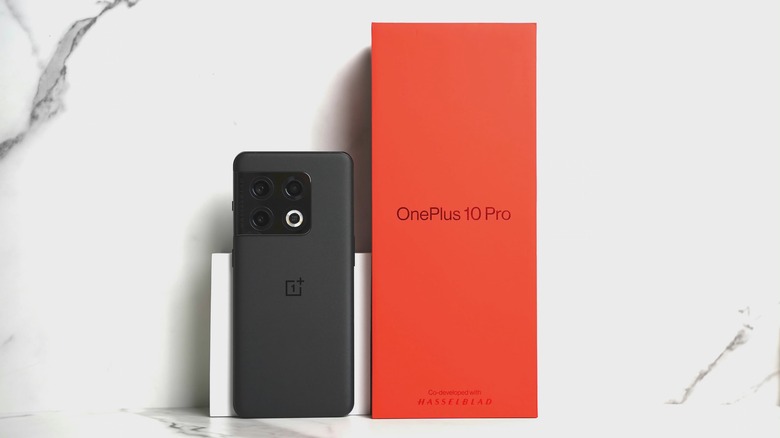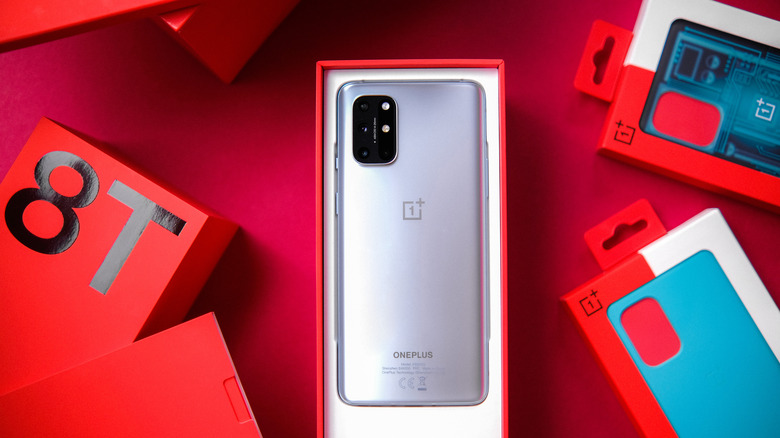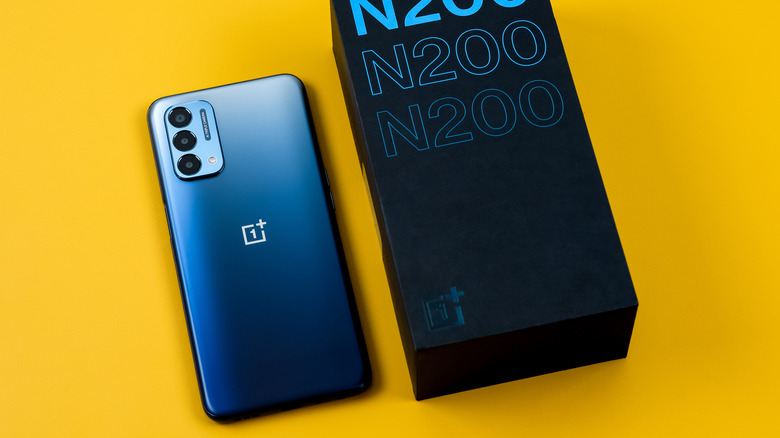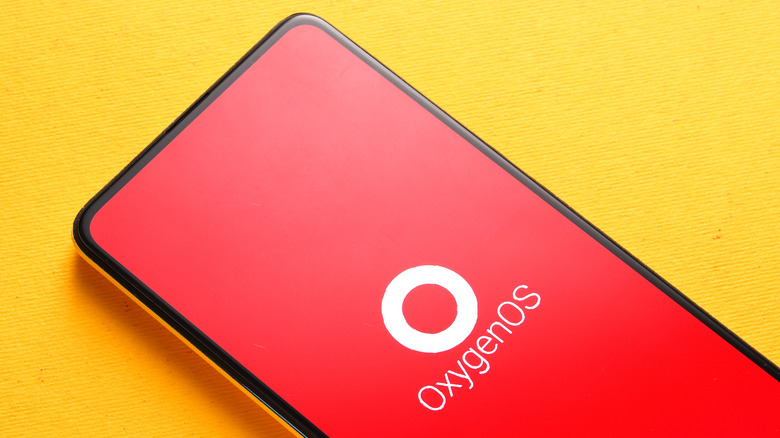The 5 Most Important Things To Know Before Buying A OnePlus Phone
When it was founded in 2013, OnePlus was exclusively a smartphone brand for tech enthusiasts. The first OnePlus, the OnePlus One, was a top-shelf flagship with a starting price of only $300. The phone wasn't easy to get ahold of, though, because it was only available through an online invite system at that time (via Wired). But OnePlus would soon earn a name for making "flagship killer" phones and a massive following in enthusiast circles. OnePlus phones offered a sleek, practical, and minimalist design language for hardware and software. Plus, unique flairs (like the Alert Slider button) helped it stand out in an overcrowded market.
Once it had established itself in the Android sphere, OnePlus focused on a broader, more mainstream audience. The company only released one phone every year in its early days, but its catalog slowly grew to include several lines of smartphones, earbuds, and wearables targeting every price segment. Along the way, OnePlus also gave up on the aggressively-priced "flagship killers" (via Android Authority). The brand is a household name today and exists as a popular alternative to Apple and Samsung. With that said — and while its roster isn't nearly as colossal as that of Samsung — the brand introduces multiple phones in three different lineups, and they can be confusing to navigate. If you're trying to buy the right OnePlus phone for your needs, here are the five most important things you need to know.
OnePlus x Oppo merger
OnePlus and Oppo are both owned by the Chinese electronics giant BBK, and the two companies have shared resources and supply chains (the blistering Warp Charge 65 technology is a rehash of Oppo's 65W SuperVOOC charging, for example) from the very beginning. But last year, OnePlus was officially declared an Oppo subsidiary, and ever since, the lines between the two brands have become increasingly blurred.
Through years of updates in the mainstream direction, the OnePlus Android skin, called the OxygenOS, had already started to mimic Samsung's OneUI. Oppo even tried to merge OxygenOS with Oppo's ColorOS. It was later called off, but the two UIs still share the same codebase, according to Android Police. OnePlus is also used as a launchpad for relaunching Oppo and Realme phones in markets where Chinese brands like Oppo, Xiaomi, and Realme don't have a strong presence. The new generation of OnePlus Nord phones is often comprised of rebranded Realme and Oppo models.
The flagship line
OnePlus usually launches two editions of the primary flagship line globally every year — a baseline model and an ultra-premium Pro variant. But the merging of OnePlus and Oppo has also shifted the typical release calendar. This year's OnePlus 10 Pro was launched as a China-first device and only rolled out to international markets weeks later. The standard OnePlus 10 remains a mystery for now. Despite what many have dubbed the "Oppofication" of OnePlus, the company's flagships remain slightly more budget-friendly than the competition (via Android Authority).
The OnePlus 10 Pro features a stunning, cutting-edge screen, the beefy Qualcomm Snapdragon 8 Gen 1 chip, and a bold, striking design. OnePlus promises an all-day battery with just 15 minutes of charging, and dedicated features built into the OxygenOS make gaming immersive and smooth. Last year's OnePlus 9 and OnePlus 9 Pro are also competitive flagships. The models marked the debut of the OnePlus x Hasselblad partnership (via OnePlus). Hasselblad is a high-end camera firm that contributed imaging software to the OnePlus 9 and OnePlus 10 series, including the 150-degree Fisheye, Nightscape, and Pro modes.
OnePlus T and R series
Starting with the OnePlus 3 series, OnePlus has consistently released a "T" variant of its primary flagship. The numbered flagships are rolled out in the first quarter, and the T models follow later in the fall. These were mild upgrades over their predecessors in the beginning, often offering minor tweaks but the same design. The original T edition, the OnePlus 3T, rocked a bigger battery and doubled the storage of the OnePlus 3, for example.
But the series evolved to stand on its own a few generations down the line. The last OnePlus T was unveiled in 2020, titled the OnePlus 8T. Save for the chipset at its heart, the model was essentially a OnePlus 9, and it closely followed that model's design. The OnePlus 8T was the first to pack blazing-fast Warp Charge 65 tech (via OnePlus). The T editions are meant to compete with the iPhones and Galaxy flagships that drop later in the year. The naming scheme was slightly altered after the OnePlus 8T. The OnePlus 9R was unveiled alongside the other two OnePlus 9 phones, and the OnePlus 9RT debuted in the second half of 2021.
The Nord line
If you're shopping on a budget, the Nord series should be on your radar. OnePlus re-entered the budget smartphone market with the OnePlus Nord in 2020. The first Nord phone was a mid-ranger, but it would pave the way for the first entry-level OnePlus phones a few months later. The Nord series also introduced an incredibly confusing branding scheme for cheap OnePlus phones.
The first entry-level models, the OnePlus Nord N10 5G and the OnePlus Nord N100, were released with only barebones, essential features. But despite the low-end specs, this Nord duo proved competitive thanks to the smooth displays, fast charging, stereo speakers, and 5G chips (via OnePlus). The latest generation of Nord phones features the OnePlus Nord CE 2 and OnePlus Nord CE 2 Lite. The Lite is a rehashed version of a Realme phone (another BBK-owned sister brand of OnePlus); it has a low-end Qualcomm chip and unremarkable cameras. That said, the OnePlus CE 2 comes with a high-performance 5G MediaTek chip, 65W Charge, and a versatile camera system.
The story of OxygenOS
OnePlus was committed to clean, lean, and bloat-free Android when it was a young brand. Early OnePlus phones were launched with a custom stock Android OS called Cyanogen (now called LineageOS). The OnePlus UI overlay was later named OxygenOS. Most phone-makers bog down their UI with unnecessary elements and bloat while limiting customization, but OxygenOS was different: it was a well-designed Android skin, making it a fan favorite.
However, recent mergers with ColorOS have been highly divisive for OxygenOS fans. It's no longer a near-stock experience, the new Oxygen OS updates are often buggy, and the ColorOS-inspired UI/UX isn't cohesive or modern. OnePlus also lags behind the competition when it comes to software support. Apple offers at least five years of OS upgrades, while Samsung guarantees four major updates and five years of security patches (even on new mid-range phones). OnePlus phones, on the other hand, only get three major Android updates and four years of security patches (via OnePlus).
